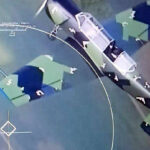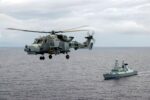As unmanned aerial threats proliferate across commercial and military domains, U.S.-based Trust Automation is stepping up with a suite of modular counter-unmanned aerial system (C-UAS) solutions. The company is set to showcase its latest technologies tailored for both mobile and fixed-site applications at upcoming defense industry events.
Modular C-UAS Architecture with Multi-Layered Defense
Trust Automation’s C-UAS offerings are built around a modular architecture that integrates multiple sensing modalities—radar, electro-optical/infrared (EO/IR), acoustic detection, and RF direction finding—with kinetic and non-kinetic effectors. This layered approach enables flexible deployment across varying threat environments, from protecting forward operating bases to securing critical infrastructure against small UAV incursions.
The company’s core C-UAS platform includes:
- Sensors: EO/IR cameras with auto-tracking capabilities; passive RF detection; radar integration via open architecture interfaces.
- Effectors: High-power microwave (HPM) emitters; electronic warfare jammers; optional kinetic interceptors or net-based capture systems.
- C2 Integration: A command-and-control module that fuses sensor data using AI algorithms to automate detection, classification, and engagement decisions.
This system-of-systems design allows users to tailor configurations based on mission need—whether mobile short-range air defense (SHORAD) roles or static perimeter protection. According to company representatives at the Association of the United States Army (AUSA) 2025 expo in Washington D.C., the platform can be mounted on tactical vehicles or deployed in containerized form for rapid setup.
AI-Enabled Targeting Enhances Threat Discrimination
A key differentiator in Trust Automation’s solution is its use of artificial intelligence for sensor fusion and threat classification. The system employs machine learning models trained on diverse drone signatures—acoustic profiles, flight behaviors, RF emissions—to distinguish between hobbyist drones and potential threats such as loitering munitions or ISR-capable quadcopters.
This capability is critical in urban or cluttered electromagnetic environments where false positives can overwhelm operators. The AI engine prioritizes targets based on threat level, proximity to protected assets, and behavior patterns such as hovering or evasive maneuvers. It also supports automatic handoff between sensors and effectors to reduce operator workload during high-tempo engagements.
The company claims that this autonomy layer enables “detect-to-defeat” cycles in under five seconds under optimal conditions—a significant improvement over legacy manual systems that require visual confirmation before engagement.
Mobile SHORAD Integration Expands Tactical Utility
Trust Automation has partnered with several U.S. defense integrators to adapt its C-UAS modules onto tactical ground vehicles such as MRAPs or JLTVs. These mobile SHORAD variants are designed to accompany maneuver units in contested environments where drone threats are persistent but rapidly evolving.
The vehicle-mounted configuration includes a stabilized EO/IR turret with 360-degree coverage; an integrated jammer array capable of disrupting common UAV control frequencies (e.g., 2.4 GHz / 5.8 GHz); and a directional HPM weapon for hard-kill effects against drone swarms or hardened targets like FPV kamikaze drones.
This mobility-focused variant supports convoy protection missions as well as forward-deployed base security where fixed installations are impractical. The system’s low size-weight-power (SWaP) footprint ensures compatibility with standard NATO vehicle power supplies without requiring auxiliary generators.
Civilian Infrastructure Protection Use Cases
Beyond battlefield applications, Trust Automation is targeting critical infrastructure operators—including airports, power plants, oil refineries, and stadiums—with its containerized fixed-site variant. This version offers plug-and-play setup with remote operation capability via secure IP links or satellite communications networks.
The company has conducted pilot deployments at several undisclosed U.S. airports under Department of Homeland Security (DHS) test programs focused on low-cost drone mitigation options for civilian airspace protection. Results reportedly demonstrated effective tracking of Class I UAVs (<20 kg) up to 3 km range using passive sensors alone—with extended range when radar is integrated.
This dual-use flexibility positions Trust Automation well within the growing domestic market for non-military counter-drone solutions amid rising concerns over commercial drone misuse near sensitive facilities.
Industry Partnerships and Roadmap Toward TRL 9
Founded in San Luis Obispo, California in 1990 as an industrial automation firm serving semiconductor fabs and defense primes like Raytheon Technologies, Trust Automation has pivoted aggressively into autonomous defense systems over the past decade. Its C-UAS program began in earnest around 2018 following early DARPA-funded research into adaptive motor controls for robotic platforms.
The current generation of its C-UAS platform is rated at Technology Readiness Level (TRL) 7–8 following extensive field trials with U.S. Army Test & Evaluation Command (ATEC). A roadmap toward TRL 9—full operational deployment—is underway through partnerships with prime contractors pursuing U.S. Army’s Indirect Fire Protection Capability–Increment 2 (IFPC Inc-2) initiatives as well as NATO-aligned procurement programs in Eastern Europe.
Future enhancements include integration with Link-16 datalinks for joint force interoperability; expanded AI model training using synthetic data from digital twin simulations; and miniaturization of effectors for dismounted infantry use cases by late 2026.
Conclusion: Filling a Critical Gap in Layered Air Defense
As militaries confront increasingly complex aerial threats from Group I–III drones—including swarm attacks and electronic warfare-resistant platforms—modular C-UAS systems like those developed by Trust Automation offer a scalable solution bridging the gap between handheld jammers and high-end air defense missiles like NASAMS or Patriot PAC-3.
The company’s emphasis on AI-driven autonomy, multi-sensor fusion, platform flexibility across mobile/fixed applications—and near-term readiness—positions it as a competitive player in the rapidly expanding global counter-drone market projected to exceed $10 billion annually by 2030 according to Teal Group estimates.










